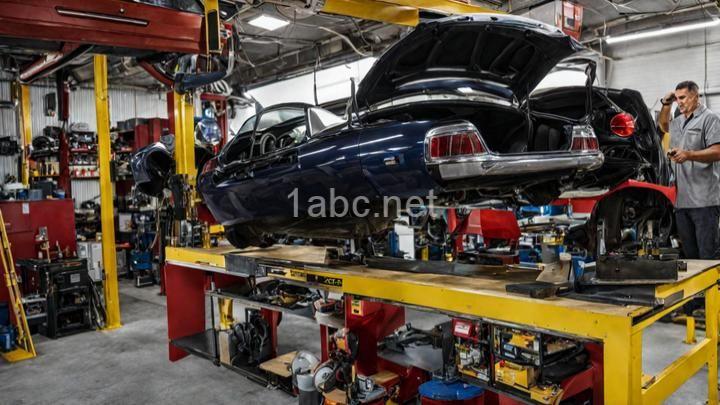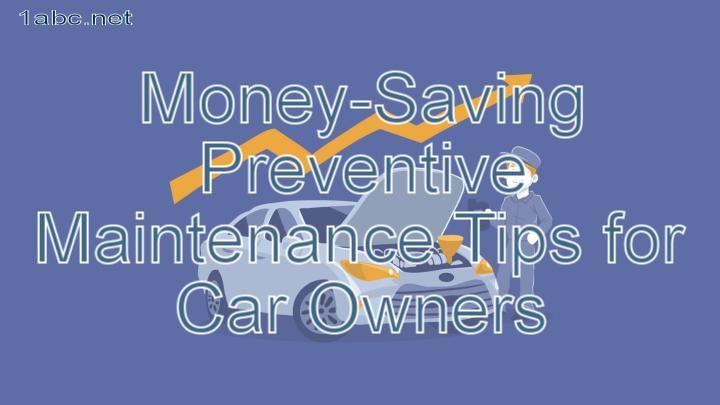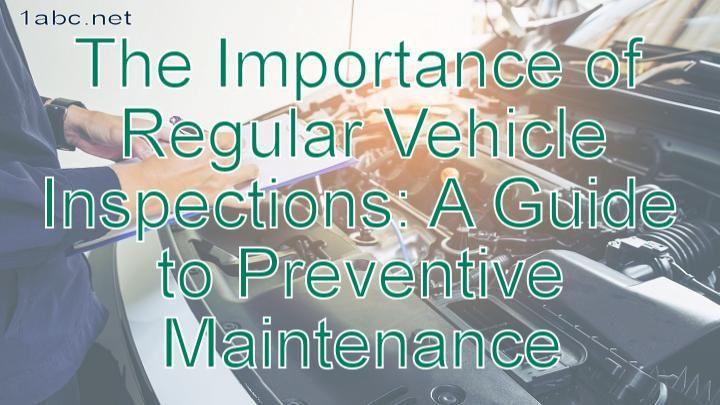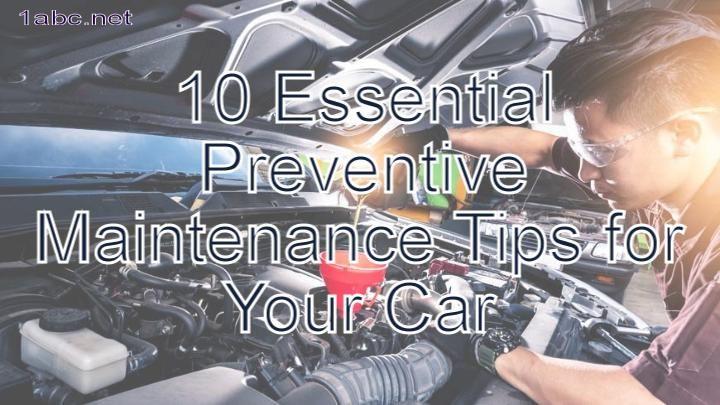Common Auto Repair Problems and How to Troubleshoot Them

Introduction:
Hey there, fellow car owners! Is your vehicle giving you a headache with unexpected problems? Don't worry, we've got your back. In this comprehensive blog post, we will discuss some of the most common auto repair problems and guide you through troubleshooting them. Whether you're an experienced car enthusiast or a beginner, this guide will help you diagnose and fix issues like a pro.
The Importance of Troubleshooting Common Auto Repair Problems:
Car troubles can happen to anyone, and they often come at the most inconvenient times. By troubleshooting common auto repair problems, you can save time and money. Identifying the root cause of an issue can help you decide whether it's something you can fix yourself or if it requires professional attention. Moreover, understanding how to troubleshoot common problems empowers you to take control of your vehicle's maintenance and ensures safe and smooth driving experiences.
I. Problem 1: Engine Misfires
Definition:
An engine misfire occurs when one or more cylinders in your engine fail to ignite properly, resulting in a loss of power and a rough-running engine. It can be caused by various factors, such as a faulty spark plug, ignition coil, fuel injector, or even a timing belt issue.
Signs and Symptoms of Engine Misfires:
- Jerking or shaking sensation while driving.
- Loss of power or acceleration.
- Rough idling or stalling.
- Illuminated check engine light.
Possible Causes of Engine Misfires: - Worn or damaged spark plugs.
- Faulty ignition coils or wires.
- Clogged or malfunctioning fuel injectors.
- Dirty or clogged air filters.
- Issues with the timing belt.
Step-by-Step Troubleshooting Guide:
- Check for loose or damaged spark plugs and wires: Inspect the condition of your spark plugs and wires. Replace any damaged or worn-out components.
- Inspect the ignition coil for any issues: A faulty ignition coil can cause misfires. Check if there are any signs of damage or corrosion and replace if necessary.
- Examine the fuel injectors for clogs or malfunctions: Clean or replace clogged fuel injectors to ensure proper fuel delivery.
- Verify the condition of the air filter: A dirty air filter can restrict airflow and cause misfires. Replace the air filter if it's dirty or clogged.
- Consider checking the timing belt: A misaligned or damaged timing belt can disrupt the engine's firing sequence. Consult a professional if you suspect an issue with the timing belt.
II. Problem 2: Battery Issues
Description of Common Battery-Related Problems:
Battery problems are a common occurrence for car owners. Some typical issues include a dead battery, slow cranking, or difficulty starting the engine.
Signs that Indicate Battery Problems:
- Dim headlights and interior lights.
- Difficulty starting the engine.
- Clicking or grinding noises when turning the key.
- Battery warning light illuminated on the dashboard.
Potential Causes of Battery Issues: - Corroded or loose battery terminals.
- A weak or old battery.
- A faulty alternator.
- Parasitic drains on the battery.
Friendly Troubleshooting Steps:
- Confirm if the battery terminals are clean and securely connected: Clean any corrosion on the battery terminals using a mixture of baking soda and water. Ensure that the terminals are tightly connected.
- Test the battery voltage using a multimeter: Measure the battery voltage with a multimeter. A healthy battery should have around 12.6 volts. If the voltage is significantly lower, consider replacing the battery.
- Inspect the alternator for proper functioning: A faulty alternator can cause battery issues. Test the alternator output using a multimeter or consult a professional.
- Evaluate if there are any parasitic drains on the battery: Disconnect the negative terminal of the battery and use a multimeter to check for excessive power draw. If you detect a drain, consult a professional to identify the source.
III. Problem 3: Braking System Troubles
Introduction to Common Braking System Problems:
The braking system is crucial for your safety on the road. Common issues include squeaky brakes, a soft brake pedal, or uneven braking.
Indicators that Suggest Brake-Related Issues:
- Squealing or grinding noises when braking.
- Reduced braking performance.
- Soft brake pedal that requires excessive pressure.
- Vibrations or pulsations when applying the brakes.
Probable Reasons Behind Braking System Troubles: - Worn brake pads and rotors.
- Low brake fluid levels or contaminated brake fluid.
- Leaks in the brake lines or calipers.
- Faulty brake master cylinder or ABS system.
User-Friendly Troubleshooting Advice:
- Check brake pads and rotors for wear and tear: Inspect the brake pads and rotors for excessive wear or damage. Replace them if needed.
- Inspect brake fluid levels and quality regularly: Ensure the brake fluid is at the recommended level. If the fluid appears dark or contaminated, consider flushing and replacing it.
- Look out for any leaks in the brake lines or calipers: Inspect the brake lines and calipers for signs of leaks. Replace any damaged components.
- Consult a professional for complex brake system issues: Some brake problems require specialized knowledge and equipment. If you're unsure or uncomfortable with troubleshooting brake issues, seek professional assistance.
IV. Problem 4: Overheating Engine
Explanation of Why Engines Overheat:
An overheating engine can be caused by a variety of factors, including coolant leaks, a malfunctioning radiator, a faulty water pump, or a stuck thermostat. When the engine overheats, it can lead to severe damage if not addressed promptly.
Signs of an Overheating Engine:
- Temperature gauge approaching or exceeding the red zone.
- Steam or coolant smell coming from the engine bay.
- Engine warning light illuminated on the dashboard.
- Loss of engine power or misfires.
Potential Causes of Engine Overheating: - Low coolant level or coolant leaks.
- Clogged radiator or coolant passages.
- Malfunctioning water pump.
- Stuck or faulty thermostat.
Friendly Troubleshooting Steps to Address the Issue:
- Check the coolant level and condition: Ensure the coolant level is within the recommended range. If it's low, add a 50/50 mixture of coolant and distilled water. Also, inspect the coolant for any signs of contamination or discoloration.
- Inspect the radiator for any blockages or leaks: Check for debris or obstructions that may be preventing proper airflow. Additionally, look for signs of leaks or damage and address them accordingly.
- Verify if the water pump is functioning properly: Inspect the water pump for any leaks or signs of damage. Replace it if necessary.
- Consider checking the thermostat: A stuck or faulty thermostat can cause the engine to overheat. Consult a professional to test and replace the thermostat if needed.
Conclusion:
In conclusion, troubleshooting common auto repair problems is essential for every vehicle owner. It allows you to identify and address issues promptly, ensuring the longevity and optimal performance of your vehicle. While this blog post provides a comprehensive guide to troubleshooting common problems, it's important to remember that some issues may require professional assistance. Don't hesitate to seek help when needed, but also feel empowered to tackle simple issues yourself. With a little knowledge and a friendly approach, you can troubleshoot common auto repair problems like a pro!
FREQUENTLY ASKED QUESTIONS
What are some common auto repair problems?
Some common auto repair problems include:
- Engine issues - such as overheating, misfiring, or a failing ignition system.
- Transmission troubles - like a slipping transmission, difficulty shifting gears, or leaking fluid.
- Brake problems - such as squeaking or grinding noises, a soft or mushy brake pedal, or a vibrating steering wheel.
- Electrical issues - like a dead battery, faulty alternator, malfunctioning power windows or locks, or a dashboard warning light.
- Suspension and steering problems - such as a shaky or vibrating steering wheel, uneven tire wear, or a bouncing or sagging vehicle.
- Exhaust system malfunctions - including a noisy muffler, a strong smell of exhaust fumes, or decreased fuel efficiency.
- Cooling system failures - like a leaking radiator, a broken thermostat, or an overheating engine.
- Fuel system issues - such as a clogged fuel filter, a failing fuel pump, or poor fuel efficiency.
- HVAC (Heating, Ventilation, and Air Conditioning) problems - such as a malfunctioning heater or air conditioner, strange odors, or weak airflow.
- Tire and alignment problems - including tire wear patterns, improper tire pressure, or misaligned wheels.
It's important to note that these are just a few examples, and there can be several other auto repair problems that can occur.
Why is my check engine light on and how can I fix it?
The check engine light turning on can indicate a variety of issues with your vehicle.
It is commonly triggered by problems with the engine, emission control system, or other important components. To fix it, you have a few options:
- Check for loose gas cap: A loose or faulty gas cap can sometimes cause the check engine light to illuminate. Make sure the cap is tightened properly or consider replacing it if it's damaged.
- Seek professional diagnosis: To accurately diagnose and fix the issue, it is recommended to take your vehicle to a qualified mechanic or an auto repair shop. They can use diagnostic tools to identify the specific problem causing the check engine light to turn on.
- Check for common issues: Some common causes for the check engine light can include a faulty oxygen sensor, a malfunctioning catalytic converter, or a misfiring engine. While you may be able to perform basic checks or replacements yourself, it is advisable to seek professional help for more complex fixes.
Remember, it is important to address the issue promptly as the check engine light serves as a warning and ignoring it may lead to further damage to your vehicle.
How do I diagnose a problem with my brakes?
To diagnose a problem with your brakes, you can follow these steps:
- Visual inspection: Start by visually examining your brake system. Look for any signs of brake fluid leaks, worn-out brake pads or shoes, damaged brake lines, or loose brake components.
- Listen for unusual noises: Pay attention to any unusual noises like squealing, grinding, or rubbing sounds when you apply the brakes. These noises may indicate worn brake pads or other issues.
- Check brake pedal response: Note how the brake pedal feels when you press it. If it feels spongy, goes all the way to the floor, or requires excessive force to stop the vehicle, it might indicate a problem with the brake system.
- Test the braking effectiveness: Find a safe and open location to test your brakes. Apply the brakes at different speeds and note if the vehicle stops smoothly or if there is any pulling to one side.
- Check warning lights: If your vehicle has an ABS or brake system warning light on the dashboard, pay attention to it. If it illuminates while driving, it indicates a potential problem with the braking system.
- Seek professional help: If you are unable to diagnose the problem or you feel unsure about your findings, it is best to consult a professional mechanic. They have the expertise and specialized tools to accurately diagnose and repair braking system issues.
Remember, your safety is crucial, so if you experience severe braking problems or are unsure about the condition of your brakes, it is best to have them inspected immediately.
How do I address problems with my car's windshield wipers?
If you are experiencing problems with your car's windshield wipers, here are some troubleshooting steps you can follow:
- Check for any obstructions: Inspect the wiper blades and the windshield for any debris, such as leaves or twigs, that might be obstructing the wipers' movement. Remove any obstructions you find.
- Clean the wiper blades: Wiper blades can accumulate dirt and residue over time, resulting in reduced effectiveness. Wipe the blades with a damp cloth or use a windshield wiper cleaner solution to remove any buildup.
- Examine the wiper blades for damage: Look for any signs of wear or damage on the wiper blades, such as cracks or tears. Damaged blades should be replaced as they can cause streaking or smearing on the windshield.
- Check the wiper fluid level: Ensure that your car's wiper fluid reservoir is adequately filled. Low fluid levels can affect the wipers' ability to clean the windshield properly. If the fluid is low, refill it with washer fluid.
- Inspect the wiper linkage and motor: If your wipers are not moving at all or are functioning erratically, there may be an issue with the wiper linkage or motor. Inspect these components for any visible damage or loose connections. If you notice any problems, it is recommended to take your car to a professional mechanic to diagnose and fix the issue.
Remember to always consult your car's owner manual for specific instructions related to your vehicle's wiper system.
What are the most common auto repair problems?
The most common auto repair problems that car owners often encounter include:
- Engine Issues: This may include problems with the spark plugs, fuel injectors, or the engine itself such as overheating or stalling.
- Battery Problems: The battery can drain or fail due to old age, extreme temperatures, or electrical system issues.
- Brake System: Brake pads, rotors, or calipers may wear out over time and require replacement or repair.
- Alternator Failure: The alternator is responsible for charging the battery and powering the electrical system. Failure can lead to a dead battery or other electrical issues.
- Transmission Problems: Transmission issues can range from slipping gears to complete failure, resulting in difficulty shifting or loss of power.
- Starter Motor Failure: The starter motor is responsible for initiating the engine. If it fails, the car won't start.
- Fuel System Issues: Problems with the fuel pump, fuel filter, or fuel injectors can lead to poor engine performance or starting issues.
- Electrical Problems: Faulty wiring, blown fuses, or malfunctioning sensors can cause various electrical issues in the car.
- Suspension and Steering Problems: Issues with shocks, struts, or the power steering system can affect the car's handling and stability.
- Exhaust System Failure: Exhaust leaks or a malfunctioning catalytic converter can lead to poor fuel efficiency, loud noises, or emission problems.
It is important to address these issues promptly to ensure your car's safety, performance, and longevity. Always consult a certified mechanic for proper diagnosis and repair.
What should I do if I experience electrical problems in my vehicle?
If you experience electrical problems in your vehicle, here are a few steps you can take:
- Check the battery: Make sure the battery terminals are clean and tightly connected. If the battery is old or weakened, consider replacing it.
- Inspect the fuses: Check the fuse box for any blown fuses. If you find any, replace them with fuses of the same amperage rating.
- Examine the wiring: Look for any visible signs of damaged or frayed wires, such as burns or cuts. If you find any issues, consider consulting a professional mechanic for repairs.
- Test the alternator: If your vehicle's headlights dim or the battery keeps dying, it could indicate a faulty alternator. Have it tested at an auto repair shop to determine if it needs to be repaired or replaced.
- Seek professional help: If you're unable to identify or fix the electrical problem yourself, it's best to take your vehicle to a qualified mechanic for a comprehensive diagnosis and repair.
Remember, dealing with electrical issues in vehicles can be complex and potentially dangerous. It's important to exercise caution and consult a professional if you're unsure about how to proceed.




